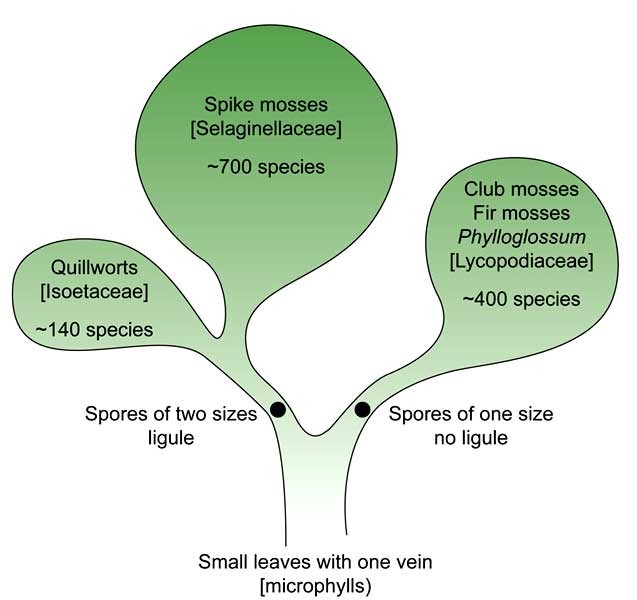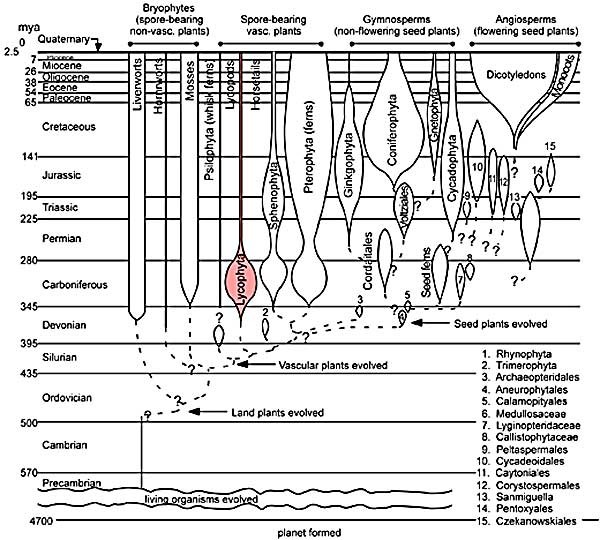Please select root levels for the menu
NZ Plants
Club mosses and quillworts
Phylum: Lycophyta

This is a diverse group with leaves, stems and roots with conducting (vascular) tissue. The leaves are very small with a single unbranched vein and are called microphylls. In some species the inner surface of the leaf base has a small membranous outgrowth called a ligule. All lycophytes have an alternation of generations in which the larger, persistent plant is the sporophyte. Sporangia are on the upper leaf surface where the leaf joins the stem. In some species sporangia-bearing leaves are arranged into cones.
Today there are five living genera of herbaceous lycopsids with 12 genera and more than 1000 species distributed throughout the world. This phylum of plants is represented by 13 species in New Zealand of which two are endemic.
There are no native species of the spike mosses.


